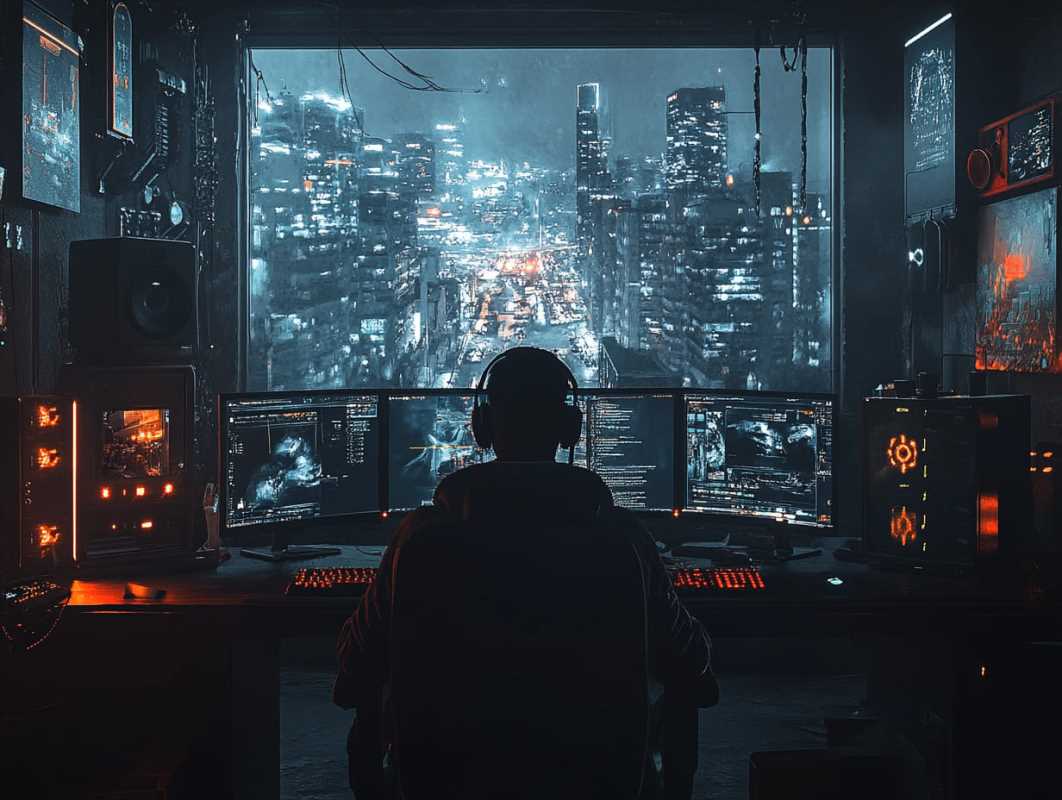Gone are the days when translation relied purely on human effort, dictionaries, or long, meticulous hours. Today, AI enables translators to work faster, smarter, and more effectively. Whether you're already building a career in language services or considering joining this dynamic field, understanding the role of AI can give you a significant edge. Let's explore how AI is reshaping the translation landscape and creating opportunities for professionals in this space.
What Does AI in Language Translation Mean?
To understand the impact of AI, we need to break down what it really involves. AI in language translation refers to the use of advanced algorithms and computational systems to convert text or speech from one language into another. Machines, guided by technology like machine learning and natural language processing (NLP), analyze gigantic data sets to learn patterns, grammar rules, and nuances in multiple languages. Solutions like Google Translate, Microsoft Translator, and DeepL have become household names, showcasing the impressive capabilities of AI.
How Does It Work?
AI translation systems leverage vast amounts of text data to "teach" machines to understand and replicate language. This process often hinges on neural machine translation (NMT), a sophisticated version of machine translation where AI mimics how the human brain processes information. For instance, NMT looks at entire sentences rather than word-by-word structures, making translations more natural and contextually accurate.
However, AI is not infallible. It still struggles with cultural subtleties, idiomatic expressions, and field-specific jargon. For example, while AI might correctly translate the Spanish phrase "tener un ojo en la nuca" to "having an eye on the back of your neck," it might fail to capture its implied meaning of being vigilant. That’s where the irreplaceable human touch comes in, ensuring translations are not only linguistically accurate but also contextually and culturally appropriate.
AI Tools Translators Already Use
AI doesn't aim to replace translators; instead, it acts as a productivity enhancer. Many professionals already use AI-powered tools to refine their workflows and deliver high-quality translations efficiently. Below are some of the most popular tools utilized today:
1. Machine Translation (MT)
Machine translation software such as Google Translate, DeepL, and Amazon Translate acts as a starting point for handling translations. Translators often feed bulk texts into these systems to generate rough drafts, which they then refine using their expertise. This process, known as post-editing, helps translate documents and web content rapidly while maintaining accuracy. DeepL, for instance, is particularly popular for its contextual proficiency compared to other MT tools.
2. CAT (Computer-Assisted Translation) Tools
CAT tools like SDL Trados, MemoQ, and Wordfast offer a blend of automation and human input. These platforms include features such as translation memory, which stores previous translations for future use. This ensures consistency, especially for repeated phrases or terms. Large-scale projects benefit significantly from CAT tools, as they allow translators to speed up their work while maintaining coherence.
3. Speech Translation Tools
Microsoft Translator and apps like iTranslate enable real-time voice translation, tackling spoken language scenarios effectively. These tools are vital for interpreters working during live events, corporate meetings, or conferences. A notable example includes real-time multilingual communication at global gaming events or international diplomatic panels.
4. AI for Proofreading and Quality Assurance
AI doesn't stop at translation. Tools like Grammarly, ProWritingAid, and LanguageTool ensure grammatical precision by checking for errors, wordiness, or phrases that don’t sound natural. They enhance both the quality and readability of translated texts, making flawless results achievable in subsequent revisions.
5. Industry-Specific Programs
Certain AI solutions are tailored for niche industries. Linguistic Studio focuses on highly technical content, including legal and medical translations, while Wordbee simplifies project management for translation agencies. Specialized tools like these ensure that professionals working within narrow industries can deliver precise, compliant results.
How AI is Revolutionizing Translation Careers
AI is pushing the boundaries of possibilities in translation careers. Instead of being a disruptor, AI serves as a complementary force, enabling translators to accomplish tasks previously thought impossible in a time-sensitive manner. Here’s how AI is paving the way for growth and innovation:
1. Faster Turnaround Times
Speed is one of AI’s biggest advantages. Translation projects that might have taken weeks can now be completed in a matter of days, if not hours. For instance, imagine a multinational corporation rolling out a website update in 20 different languages. Rather than translating every page manually from scratch, language specialists can use AI to generate a first draft and focus their time on refining the text for cultural nuance.
2. Enhanced Global Communication
Businesses are expanding internationally at a faster rate than ever before, and AI-powered translation has become a crucial enabler of global communication. Companies setting foot in foreign markets rely on AI-assisted solutions to translate campaigns, manuals, and advertisements. However, they still need skilled translators to ensure the message resonates culturally with the new audience. For example, a catchy slogan in English may fail in translation or even offend the target readers elsewhere unless expert human oversight is involved.
3. Opportunities in Specialized Translations
Technical fields often demand translations filled with specific terms and complex concepts. Medical research papers, legal contracts, and technical manuals require precision and familiarity with specialized vocabulary. AI tools can lay the groundwork, but specialists who combine AI with linguistic and industry expertise are irreplaceable. For instance, pharmaceutical firms expanding into non-English-speaking markets depend on translators with mastery in medical terminology.
4. Easier Remote Collaboration
Cloud-based translation platforms like Smartcat and Crowdin allow professionals and language teams to collaborate seamlessly from anywhere in the world. Freelance language experts can now access projects based in entirely different time zones, managing tasks on platforms powered by AI to streamline document sharing, track deadlines, and ensure quality compliance.
5. Expanding Roles for Translators
AI is reshaping the translator’s job description. Aside from translation itself, professionals are now taking on tasks like post-editing machine translations, localization project management, and training AI language models. These roles demand a hybrid skill set, combining linguistic expertise with technological know-how.
Where AI Falls Short (And Why You’re Essential)
Despite AI’s growing capabilities, human translators play an indispensable role in maintaining the integrity of language. Here’s where AI still struggles:
- Contextual Understanding: AI may translate words accurately but fails to interpret contextual or figurative meaning. For example, consider translating "kick the bucket" to French. While AI might deliver a literal translation, a human translator would recognize it as an idiom meaning "to die."
- Cultural Sensitivity: Language is deeply tied to culture. AI often overlooks subtle social or regional variances, which leads to awkward or even offensive translations. For instance, AI might address a client informally in cultures that value formality.
- Creativity and Emotional Nuance: Creativity remains out of reach for machines. Marketing slogans, emotional storytelling, poetry, and other creative formats rely significantly on human insight.
These limitations highlight the need for well-rounded language professionals who can bridge the gap between AI’s speed and the human ability to add warmth, cultural accuracy, and creativity.
How to Prepare for AI in the Translation Industry
To thrive in a translation career alongside AI, you need to adapt and specialize. Here’s how you can stay ahead:
1. Master AI Tools
Familiarize yourself with translation software and platforms like Trados, DeepL, and MemoQ. Experiment with their features and keep up with updates, as these tools are constantly evolving to improve productivity.
2. Focus on Areas Machines Can’t Handle
Specialize in fields requiring precision, such as legal or medical translations, where accuracy matters more than quantity. Similarly, creative fields like marketing translations present opportunities for translators who can appeal to emotions and cultural sensibilities.
3. Stay Updated on Trends
Attend webinars, read industry blogs, and participate in forums and professional associations. AI innovation moves fast, and keeping up ensures you remain competitive.
4. Improve Post-Editing Skills
Even as AI grows more accurate, machine-generated translations still need expert humans to polish them. Post-editing will continue to be a highly sought-after skill in the industry.
5. Build Cultural Savviness
Your ability to understand and adapt to cultural differences remains one of the most critical skills. AI can’t replicate the empathy and intelligence required to connect people through languages in nuanced ways.







